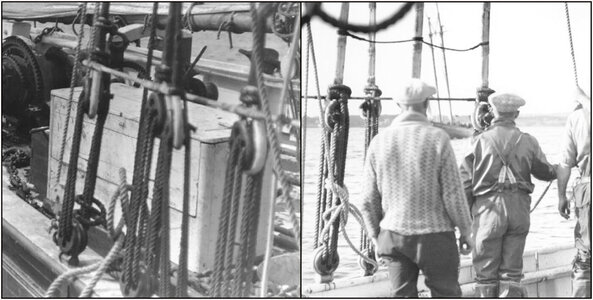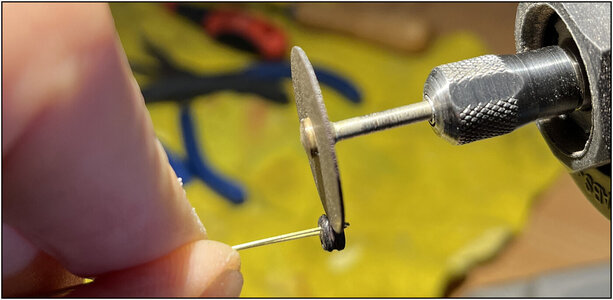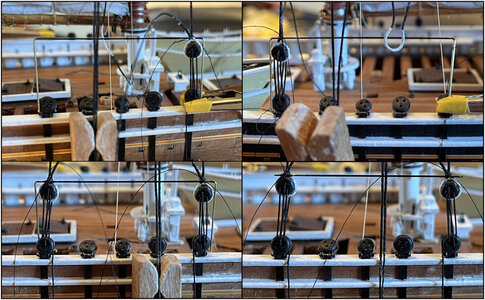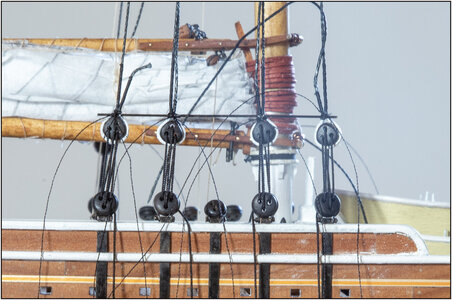Thanks, Dean. Again a bit ‘out of the box’.Beautiful work! That’s looks great!
Regards, Peter
Thanks, Dean. Again a bit ‘out of the box’.Beautiful work! That’s looks great!
Thanks, Stephan. For me: almost ……. But tissue-paper sails are a option in this scale.Just perfect
Thanks, Paul. As answered earlier, I really appreciate this from a very fine colleague-furled-sail-maker!BOOM! Now that's a nicely furled sail!

You nearly had me convinced to commit to furling sails, nearly.The main sail stowed on the boom with the gaff on top.
First I made a mold with a few clothespins in which the boom could lie. Fold it hoop by hoop and stored the sail between the arms:
View attachment 338837
And enclosed with a few temporary slings.
When finalizing I had to feed the slings both at the top and the bottom between the wood and the sail:
View attachment 338838
Cleared some space with a toothpick. I also had to keep in mind: the boom tackle under the boom and de bridles on top.
Then this is the result:
View attachment 338839
With sharp light from above.
With some details:
View attachment 338840
The sail is quite cleverly secured with the slings:
-with the eye splice forward, the rope is first thrown back over the gaff;
-brought forward between the sail and the boom;
-along in front of the sail, pushed back between the sail and the gaff;
-behind the sail, brought forward under the boom;
-passed through the eye splice and tightened.
The sling then separately threads the sail together and also pulls everything tight around the gaff and the boom.
Oblique from above:
View attachment 338841
From the port side with natural light:
View attachment 338842
Anyway, I'm very pleased with this result. The folds fall naturally and the whole gives a nice view of a furled sail.
Regards, Peter
Thanks, Johan. About the visibility of the sails on your BN, we will see …………You nearly had me convinced to commit to furling sails, nearly.
What a beautiful job!

Oh, yes, absolutely. You will see sails on my BN...About the visibility of the sails on your BN, we will see …………
Thanks, Uwe. Much appreciated!Looking very good - your sail is really very very good - Bravo
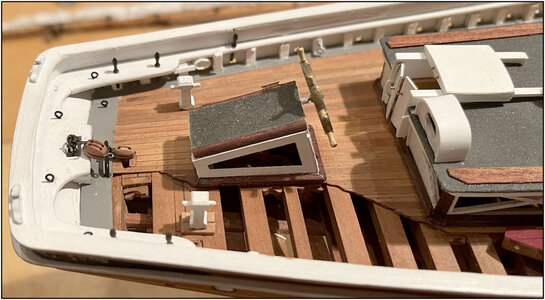
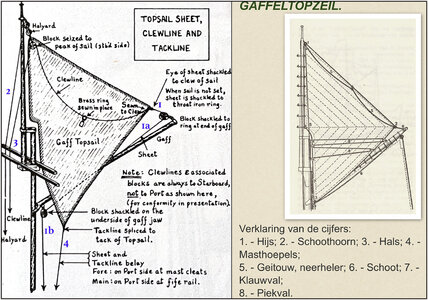
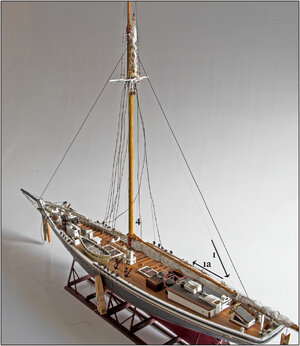
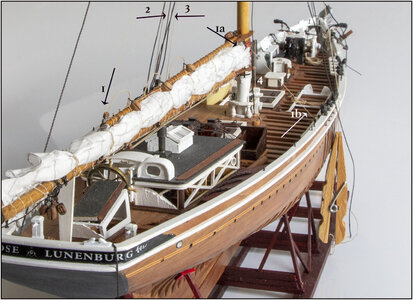
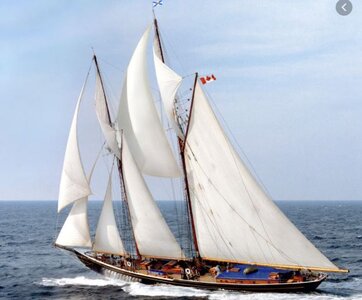
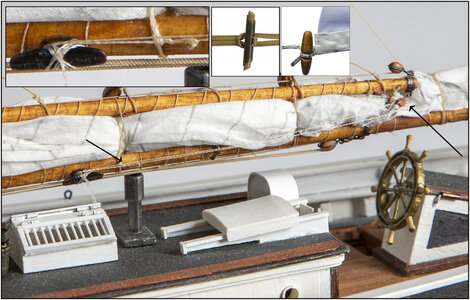
Thanks, Stephan. And now a aha ……. Grant @GrantTyler is busy with the same type of lines. Yesterday he showed one and called it aan joggle. What’s in a name ……Touwtje houtje = toggle rope

I'm often surprise by names in rigging, especially Dutch names makes sometimes no sense or make it more difficult. English names are easily to follow, mostly. And there is the danger by translate from English to Dutch. Sometimes something is not the same but sounds like. Example: stay-tackle is not the "stagtakel" but the "zijtakel". Another word for stay-tackle in English is also side-tackle. That makes more sence. "Stagtakel" in English is garnet or garnet-tackle.Thanks, Stephan. And now a aha ……. Grant @GrantTyler is busy with the same type of lines. Yesterday he showed one and called it aan joggle. What’s in a name ………. clewline or clueline …..
Regards, Peter.

Lost in translation...I'm often surprise by names in rigging, especially Dutch names makes sometimes no sense or make it more difficult. English names are easily to follow, mostly. And there is the danger by translate from English to Dutch. Sometimes something is not the same but sounds like. Example: stay-tackle is not the "stagtakel" but the "zijtakel". Another word for stay-tackle in English is also side-tackle. That makes more sence. "Stagtakel" in English is garnet or garnet-tackle.
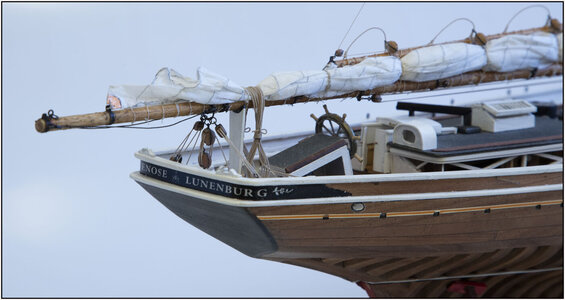

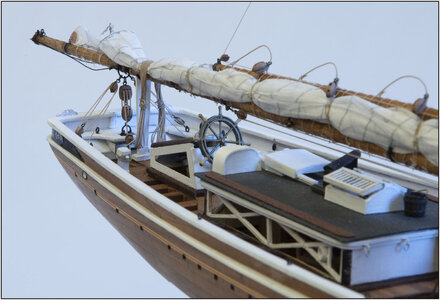
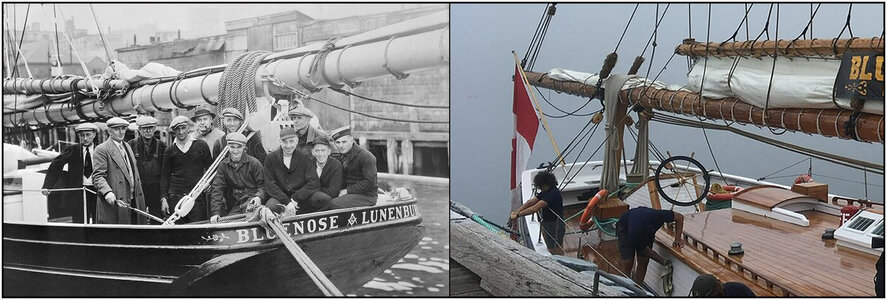

Thanks, Uwe. Looking at the pictures in the Nova Scotia Archives shows every time again new details to build on the model. Very inspirational and great fun to do.a small but great detail - I love it

Thanks, Heinrich. You know how to strike a chord!Catch-up time for me on all the fabulous build on SOS - and none come more fabulous than yours, Peter. She is now more and more looking like a miniature ship (not a model) - a better accolade I cannot give you.
